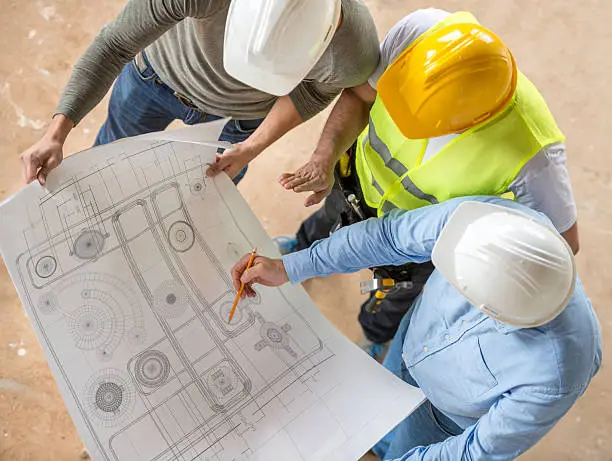Before starting any civil design project, the first crucial step is to clearly define the scope and requirements. This involves discussions with stakeholders, site visits, and understanding the specific goals of the project. Engineers analyze environmental factors, land use regulations, and zoning laws to ensure compliance with local and state guidelines. This step lays the foundation for a well-structured plan that meets the project’s needs.
Conducting Site Analysis and Feasibility Studies
A thorough site analysis is vital for assessing the geographical and environmental conditions of the location. Engineers evaluate soil composition, topography, drainage patterns, and potential environmental impacts. Feasibility studies help determine the project’s viability by analyzing factors like cost, environmental regulations, and material availability. This ensures that the project is both practical and sustainable.
Conceptual and Preliminary Design
Once feasibility is confirmed, engineers begin the conceptual design phase. This includes creating preliminary sketches, 3D models, and digital simulations to visualize the project. At this stage, various design options are explored, and potential challenges are identified. Modern software tools, such as AutoCAD, Civil 3D, and BIM technology, help refine designs before moving into detailed engineering.
Detailed Engineering and Design Development
After the preliminary design is approved, the project moves into the detailed engineering phase. This includes:
- Structural calculations and load analysis
- Electrical, plumbing, and mechanical system planning
- Roadway and drainage design
- Utility network integration
Engineers work closely with architects and urban planners to create a final design that meets safety, efficiency, and sustainability standards. The use of cutting-edge technology enhances precision and reduces errors at this stage.
Compliance with Regulations and Permitting
Ensuring that the project adheres to local regulations is crucial for avoiding legal complications. Engineers submit plans for review by relevant authorities to obtain necessary permits. In civil design in Hollywood FL, strict guidelines must be followed regarding environmental sustainability, flood control, and land development. Meeting these regulations ensures a smooth approval process and prevents costly delays.
Cost Estimation and Budget Planning
A detailed cost analysis is conducted to ensure the project remains financially viable. Engineers estimate expenses related to materials, labor, equipment, and contingencies. Budget planning also involves risk assessment, where potential cost overruns and unforeseen challenges are identified. A well-prepared budget ensures that the project is completed within financial constraints while maintaining quality standards.
Construction Planning and Scheduling
Before construction begins, a comprehensive plan is developed to outline timelines, milestones, and resource allocation. Engineers collaborate with contractors, suppliers, and project managers to ensure a seamless workflow. Effective scheduling helps in:
- Preventing delays and cost overruns
- Coordinating multiple teams
- Ensuring timely material procurement
- Managing labor efficiently
Implementation and Construction Execution
With everything in place, the project moves into the construction phase. Engineers oversee site activities to ensure adherence to design specifications. Regular inspections, quality control checks, and progress monitoring are essential for maintaining high construction standards. Advanced project management tools help track real-time progress and address issues proactively.
Quality Assurance and Safety Compliance
Safety is paramount in any civil design project. Engineers implement strict safety protocols to protect workers and the public. Quality assurance measures include material testing, structural integrity evaluations, and compliance audits. Regular inspections help identify and rectify defects before they become major problems.
Environmental and Sustainability Considerations
Sustainable design practices are increasingly prioritized in modern civil design projects. Engineers incorporate green building techniques, energy-efficient systems, and eco-friendly materials to minimize environmental impact. Water conservation, waste management, and carbon footprint reduction strategies are integrated into the design to promote long-term sustainability.
Project Handover and Final Inspection
As the project nears completion, a final inspection is conducted to verify that all design specifications have been met. Engineers document all aspects of the construction, ensuring that as-built drawings, maintenance manuals, and safety certifications are provided. The project is then handed over to the client with a detailed report on its performance and future maintenance recommendations.
Post-Construction Support and Maintenance Planning
Civil engineering projects require ongoing maintenance to ensure longevity and efficiency. Engineers develop maintenance schedules and provide training for facility managers. Post-construction support may include periodic inspections, performance monitoring, and troubleshooting assistance. This ensures that the project continues to function optimally for years to come.
The Role of Engineering Experts in Civil Design
Eli Polikar, a visionary in Florida’s engineering sector, founded Polikar Engineering Solutions to enhance collaboration among engineers. Through unwavering dedication, he assembled a highly skilled team focused on precision and excellence. Polikar Engineering Solutions (PES) offers forensic engineering, construction management, design services, and concrete restoration. Specializing in milestone inspections, concrete repairs, litigation insurance, and 40-year recertifications in Miami-Dade, PES upholds transparency and quality in every project.
Conclusion
Every civil design project follows a structured approach to ensure efficiency, safety, and sustainability. From initial planning to final execution and maintenance, each step plays a crucial role in the project’s success. Whether it’s infrastructure development or urban planning, a well-executed civil design in Hollywood FL leads to durable and innovative solutions that stand the test of time. By leveraging modern technology and best practices, engineers continue to shape the future of civil engineering with cutting-edge designs and sustainable methodologies.
click here to visit website for interesting collection of articles

